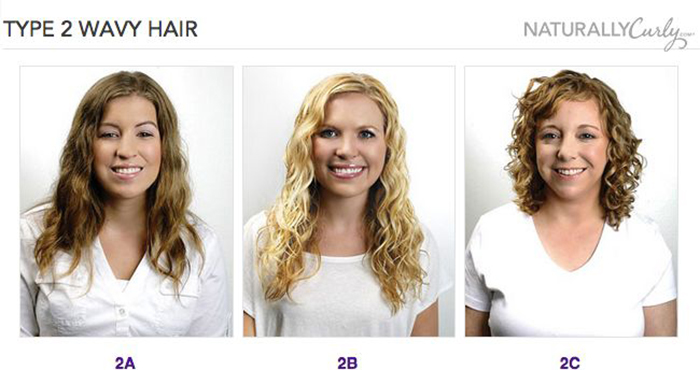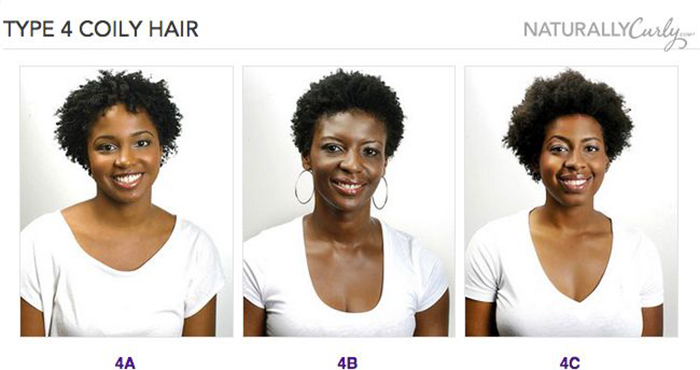So you bought hair products with the word “curl” on the bottles and watched a few tutorials by a YouTuber who has your dream curls, but for some reason your hair still isn’t coming out the way you want it to. Let’s take a step back: Do you have the same curl pattern as the person whose curls you’re envying? If not, you may be setting your curls up to fail.
If you are new to the world of natural curls, getting to know your curl pattern can help you discover styling techniques and products that will work for you. You’ll also be able to more easily find the videos that’ll be most relevant to you.
Related: What’s Your Hair Type? Take The Quiz
What’s a curl pattern?
At NaturallyCurly, we find it useful to divide curl patterns into three main groups: wavy, curly, and coily. We know “curly” means a lot of things to a lot of people, and we wince when we see comments on social media saying “Those aren’t real curls; those are just waves!” We have no tolerance for comments that insinuate that one curl pattern is better or worse than another. It goes without saying, but we’ll say it anyway: We want women of all curl patterns to love and embrace their hair. This texture-typing system is not meant to be divisive, but to provide guidance that will help you care for, style, and LOVE your mane.
Where to start
The best time to identify your curl pattern is when your hair is at its healthiest state; this means moisturized and free of damage. If you have been straightening your hair for the past few years or even months, you may have heat damage. To get a clear idea of your natural curl pattern, it’s best to look at it once you have stopped using heat tools — including blow dryers, flat irons, and curling wands — for at least three months. If the roots are curlier than the ends of your hair, then this is a clear indicator of heat damage, and figuring out your curl pattern may be a struggle until your natural curls grow in and the damaged ends have been cut off.
If you have curl patterns that are drastically different from each other, you may want to treat those sections of your hair differently
Remember, most people are a mix of a couple of curl patterns. As you can see in the graphic above, we included examples of someone who could be considered Type 2c/3a, and someone who fits in between Types 3c and 4a. If you feel you fit multiple curl patterns, that is totally normal. If you have curl patterns that are drastically different from each other, you may want to treat those sections of your hair differently (for example, using heavier products in one section”> or some use perm rods to create a uniform curl pattern. Finding an experienced stylist who knows how to work with curls can also help customize your haircut to accommodate your multiple curl patterns (so one section doesn’t look longer than another”>.
Below, find descriptions for the three most common types of curly hair. Within each of the categories, there are more subtle distinctions; read on to determine which one fits you best.
Wavy Hair
Wavy hair is characterized by S-shaped waves (rather than coils”>. Women with wavy hair typically use mousses, leave-in serums, and heat protectants rather than creams or gels, and are generally most concerned with reducing their frizz and finding products that will give their waves light hold without weighing them down. Those with wavy hair are less likely to avoid certain ingredients like silicones and sulfates, and more likely to use heat-styling tools like flat irons or curling wands. Think Taylor Swift (back before she straightened her hair”> and Lorde.
If your hair is close to straight but has a loose, gentle bend, you likely have Type 2a waves. If your hair is mostly straight at the roots and more defined waves form below your eye level, your waves are Type 2b. If your waves start right at the roots and you have very defined waves mixed with actual ringlets, then you are Type 2c.
Curly Hair
Type 3 hair has more defined, springy curls that form spirals or ringlets. Those with Type 3 hair are mostly concerned with reducing frizz and adding definition. They use creams and gels to give their curls definition, and they’re more likely to avoid drying ingredients in their shampoos.
If your curls are similar in size to the large sidewalk chalk you used as a kid, then you’re Type 3a. If your curls have the circumference of a Sharpie, then you’re Type 3b. And if your curls have the circumference of a pencil or a straw, then you’re Type 3c. Many people believe (and we tend to agree”> that Type 3c curls are almost their own category, because they are much tighter corkscrews and generally have much more volume than 3a and 3b curls, yet they are still very different from Type 4. YouTubers with Type 3c hair include heygorjess and Shinestruck.
Coily Hair
Type 4 hair can appear much shorter than it is (a phenomenon known as shrinkage“>. For those with Type 4 locks, it’s all about moisture and preventing tangles. Conditioners with lots of slip and moisturizers are must-haves in a coily girl’s product lineup. Slip refers to how the product lubricates your hair and describes products (i.e., daily conditioner, deep conditioner, or leave-in conditioner”> that are usually applied during washing and detangling.
If you look closely at a strand of hair and it looks like small, tight corkscrews the size of a crochet needle, you’re seeing Type 4a coils. Type 4b coils are tighter than 4a and more closely resemble the spring of a pen. If you have Type 4c hair, then your coils will be similar to the 4b curl pattern but you may have higher density (more hair strands per square inch”> and coarser strands (each individual strand is wider”>, which creates greater shrinkage and less curl definition.
Two women with the same curl pattern can have hair that looks completely different
Curl pattern is only one part of your hair type
You may have realized by now that two women with the same curl pattern can have hair that looks completely different. That is because curl pattern is only one part of the hair type equation. Other important factors are porosity, length, width, and density. In other words, whether your hair long or short, fine or coarse, thick or thin — these will all drastically affect the way your hair looks and how it reacts to products.
Does it matter?
There are many hair-typing systems out there, and many people also argue that curl pattern doesn’t matter. We think it matters because the way one woman pineapples her Type 3c curls at night may not work for another’s Type 3a hair. And while it seems like everyone can’t get enough of coconut oil, not all hair types should use it in the same way. For example, Type 2 wavies might find more success using coconut oil as a pre-shampoo treatment while someone with a tighter texture might use it to seal her ends with a moisturizer.
With so much information out there, focusing on tips and reviews from those who share your curl pattern will likely be more beneficial than advice from people in a different category, and will prevent hair fails that make you want to reach for the flat iron. As with all things, it takes trial and error, but knowing your curl pattern can help cut down on the errors.
This article was originally published in 2015 and has been updated for clarity and to incorporate reader feedback.




